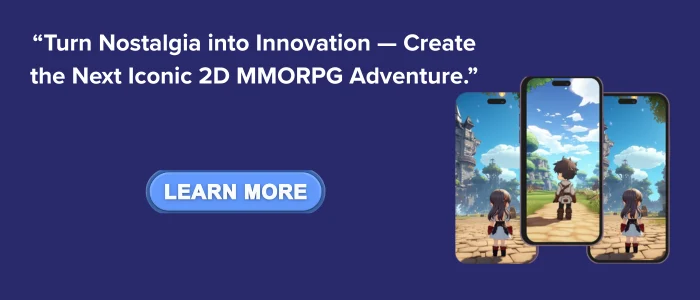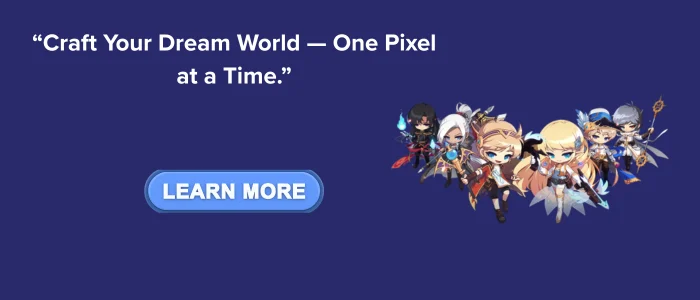Developing a game like MapleStory is an ambitious yet thrilling endeavor. The appeal of this side-scrolling MMORPG lies in its charming 2D pixel art, immersive quests, and dynamic multiplayer interaction. Whether you’re an indie developer or part of a larger team, creating a MapleStory-inspired experience involves a combination of game design, technical proficiency, and creative storytelling. In this guide, we delve deep into the essential steps, technologies, and strategies for embarking on your own MapleStory game development journey.
Understanding the Appeal of MapleStory
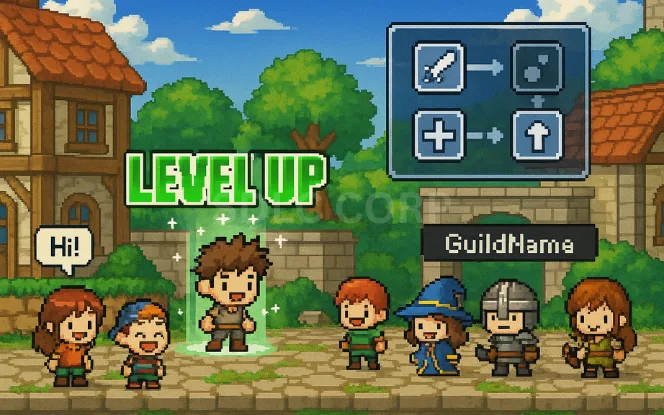
- Whimsical Art Style: Creates a visually appealing and nostalgic atmosphere that draws players in.
- Robust Character Progression System: Allows players to develop their characters through levels, skills, and gear, fostering long-term engagement.
- Tightly-Knit Social Communities: Encourages cooperative gameplay and friendships through guilds, parties, and in-game events.
- Comprehensive Quest System for MMORPGs: Provides narrative depth and a structured path for player progression.
- Engaging Combat Mechanics: Keeps gameplay dynamic and challenging, maintaining player interest over time.
- Expansive World-Building: Inspires exploration with diverse environments, lore-rich regions, and immersive details.
Planning Your Game Concept
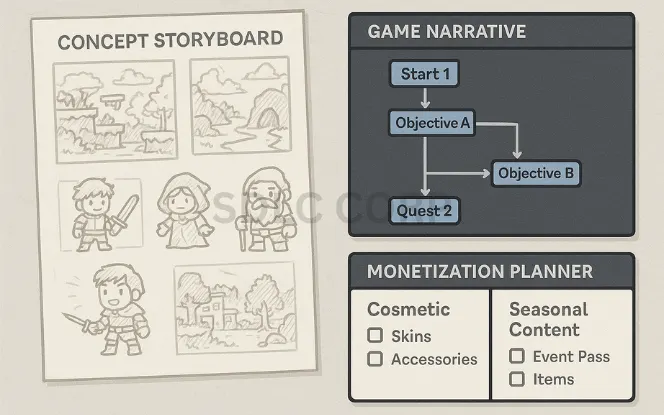
Every successful game starts with a solid concept. Ask yourself key questions:
- What unique angle will your game offer?
- Will it feature a vast open world or segmented stages?
- How will players interact with each other?
These decisions help determine the scope and complexity of your development. It’s also crucial to outline the narrative structure, gameplay loop, and monetization model early in the planning phase.
Choosing the Right Game Engine
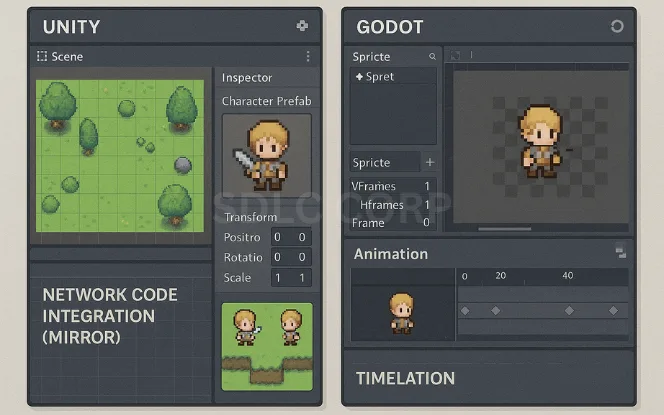
Unity and Godot as Top Choices
- Ideal engines for 2D MMORPG development due to their flexibility and feature sets.
Unity’s Strengths
- Extensive support for 2D graphics, allowing for rich visual design.
- Robust networking libraries and asset management tools.
- Well-suited for building multiplayer online games.
Multiplayer Integration
- Unity integrates seamlessly with tools like Photon and Mirror.
- These tools help manage multiplayer functionality, replicating the dynamic interactions seen in MapleStory.
Designing Your Game World
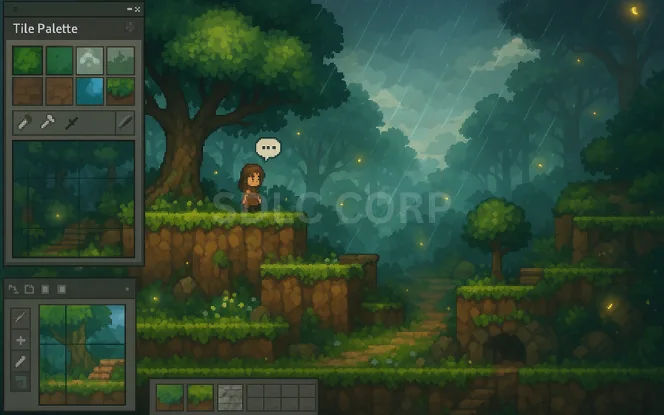
Rich and Diverse Game World
- MapleStory features a variety of landscapes, towns, dungeons, and monsters.
- Aim to create environments that feel alive, dynamic, and immersive.
Environmental Design Techniques
- Use tilemaps to build modular and scalable 2D environments.
- Apply parallax scrolling to create depth and visual interest.
- Incorporate layered backgrounds and weather systems to enhance realism.
- Design unique regions with distinct themes and aesthetics.
Quest System Integration
- This is the ideal stage to build a compelling quest system for MMORPG gameplay.
- Avoid simple fetch quests; instead, design narrative-driven arcs.
- Create quests that evolve through player decisions and actions, encouraging deeper engagement.
- Use quests to guide exploration and build lore, sustaining long-term player interest.
Building a Character Creation System
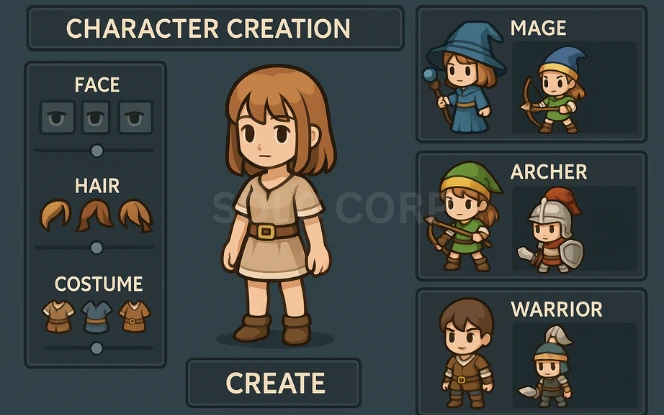
- A strong character creation system is essential for enhancing player personalization and immersion.
- Offer a variety of character classes, each with its own unique skills and progression paths to suit different playstyles.
- Provide in-depth customization options, including:
- Hairstyles
- Facial features
- Outfits
- Accessories
- Hairstyles
- Empower players to create avatars that truly reflect their identity within the game world.
- Implement modular character rigs and dynamic layering to support interchangeable costumes and fluid animations.
- Ensure the system is scalable and adaptable, allowing for seamless integration of new classes, customization items, and features in future updates.
Multiplayer Infrastructure
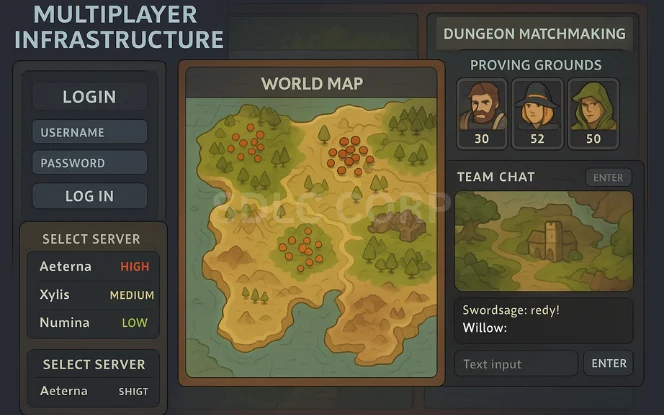
One of the defining aspects of MapleStory is its real-time multiplayer functionality. To develop this, you’ll need a dedicated server architecture. This includes:
- Login and authentication systems
- World and channel servers
- Instance management for dungeons or PvP
- Chat and friend systems
Using a backend like Photon, Mirror, or SmartFoxServer can simplify this aspect. You’ll also need to manage synchronization, lag compensation, and security measures like anti-cheat systems.
Implementing the Quest System for MMORPG
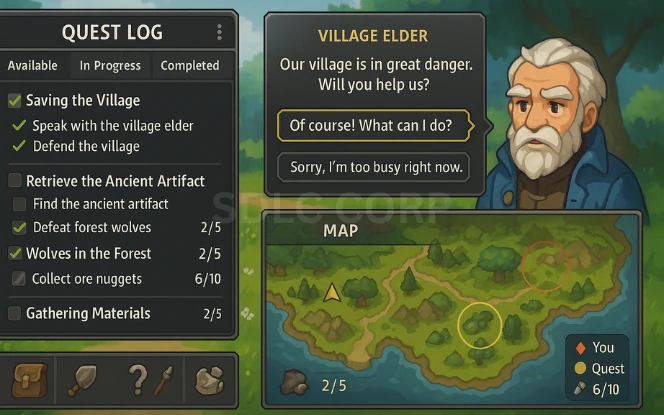
The quest system is a pillar of gameplay progression. Quests guide players through the game world, introduce lore, and offer rewards. Build a flexible quest framework that allows designers to create various quest types:
- Kill a number of monsters
- Gather specific items
- Escort or rescue NPCs
- Trigger story events
Include dynamic quest states and dependencies to allow branching storylines. A good quest system for MMORPG games will also include dialogue trees, quest logs, and progression markers on the game map.
Art and Animation Style
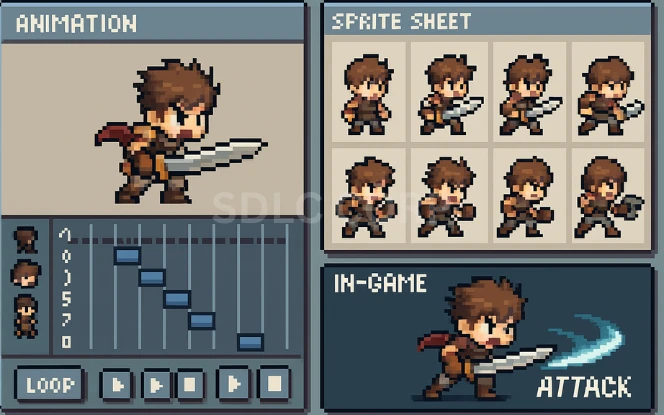
MapleStory is renowned for its pixel art and fluid animations. To capture a similar aesthetic, you’ll need a dedicated team or skill set in pixel art design. Use tools like Aseprite, Photoshop, or Piskel to create sprite sheets.
For animations, rig your characters with bone structures for smooth movements, especially if you plan to implement complex attack combos or skills. Blend animations to allow for seamless transitions between actions.
Audio Design
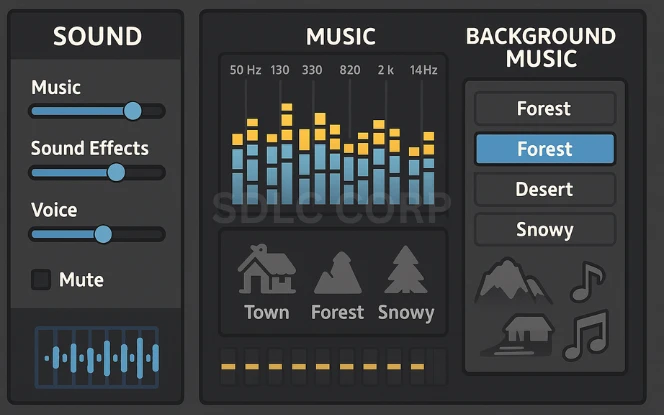
Never underestimate the power of audio in shaping game atmosphere. MapleStory’s soundtrack is iconic. Compose original music that suits the tone of each region or quest. Use sound effects for combat, footsteps, UI interactions, and ambient noises to breathe life into the world.
Combat and Skill Systems
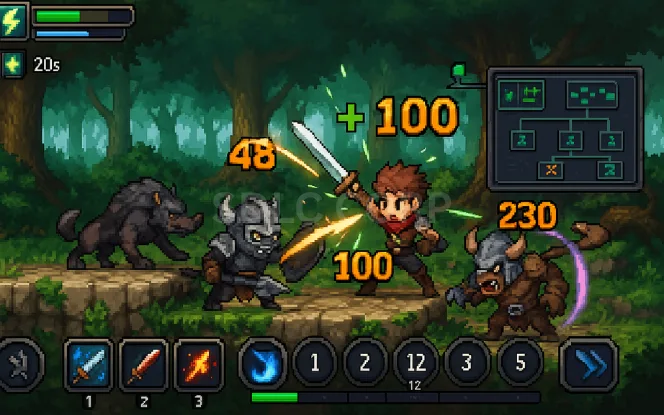
Design a fluid combat system with clear hitboxes and responsive controls. Integrate class-specific abilities and passive skills. Balance is key; no class should feel overpowered or underwhelming. Skill cooldowns, buffs, debuffs, and combo chaining all contribute to depth and player mastery.
Use a skill tree interface to allow players to plan their development paths. Provide visual and auditory feedback for each action to enhance the sense of impact.
Monetization Strategies

While MapleStory was originally free-to-play, it monetized through cosmetic items, pets, and quality-of-life features. You can follow a similar model:
- Sell cosmetic skins and outfits
- Offer convenience items like XP boosts
- Introduce a seasonal battle pass system
Avoid pay-to-win mechanics, which let players buy advantages that disrupt balance and fairness. Instead, focus on cosmetic and convenience-based items that don’t impact gameplay. Transparent monetization builds long-term player trust.
Testing and QA
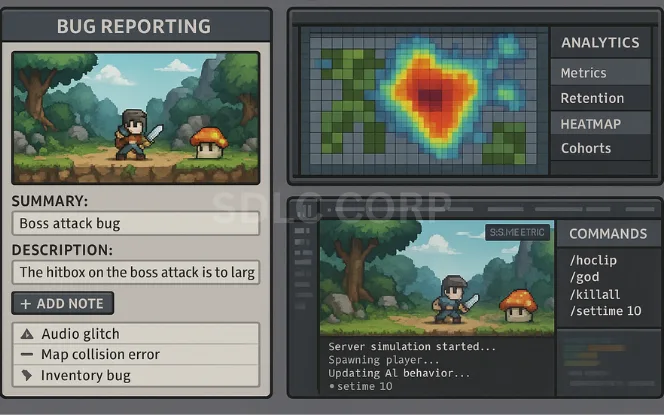
MMORPGs are complex, and testing is critical. Conduct closed alpha and beta testing phases. Gather feedback on gameplay balance, server stability, and bug reports. Use analytics to monitor player behavior and identify friction points.
Automate testing for certain systems (like UI or quest triggers), but don’t skip manual testing for multiplayer interactions and server performance.
Launch and Post-Release Support
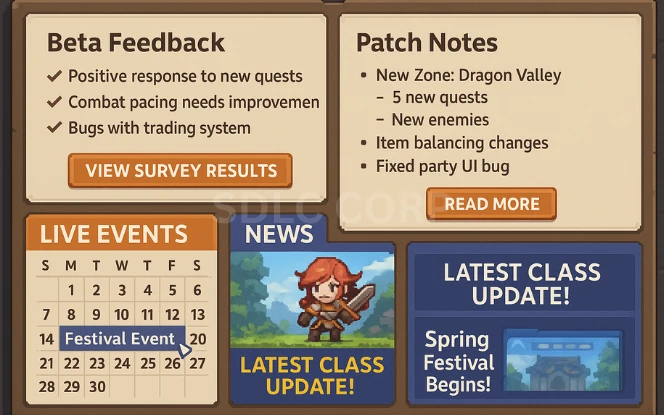
Plan a staggered release: start with a closed beta, followed by open beta, and finally, a full launch. Use each phase to iron out bugs and scale infrastructure.
Post-launch, support your game with regular updates. Introduce new maps, quests, character classes, and seasonal events. Keep communication open with your community through forums, Discord, or in-game announcements.
Building a Community
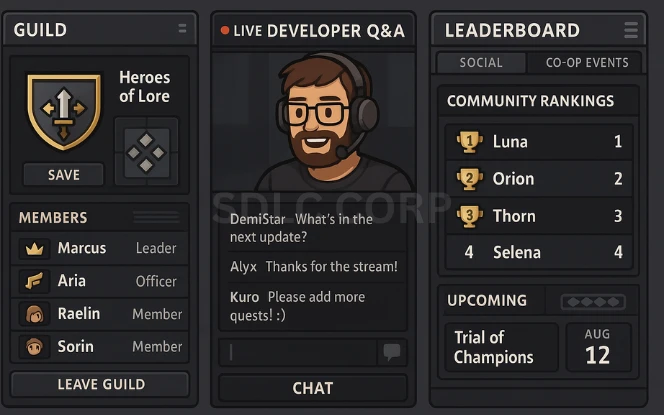
A passionate community can be your game’s greatest asset. Encourage social interaction through guild systems, leaderboards, PvP arenas, and co-op events.
Host community contests, developer Q&As, and livestreams. Listen to player feedback and involve them in the game’s evolution. A strong community can drive organic growth and long-term success.
Conclusion
Creating a game like MapleStory is no small feat, but with careful planning and a dedicated team, it is entirely achievable. Embrace the charm of 2D MMORPG development and focus on what made MapleStory iconic: its unique art style, robust character creation system, compelling quest system for MMORPG progression, and tight-knit multiplayer experience.
By combining creative vision with technical execution, you can bring a new world to life—one that captures the hearts of players just as MapleStory did. Stay passionate, stay focused, and above all, keep iterating. Your dream MMORPG could be the next big thing in gaming.
Contact Us Now to discuss your project, get a quote, or schedule a free discovery call.
Together, we can build something unforgettable.
FAQ's
1. Do I Need a Large Team to Develop a Game Like Maplestory?
No, but it helps. Solo developers can create smaller-scale versions with essential features. However, building a full-fledged 2D MMORPG often requires multiple roles—game designer, artist, developer, sound designer, and community manager.
2. What Game Engine is Best for 2d MMORPG Development?
Unity and Godot are both excellent choices. Unity offers more out-of-the-box networking solutions and asset support, while Godot is lightweight and open-source—great for indie developers.
3. How Important is the Quest System for an MMORPG?
Extremely important. A robust quest system provides narrative structure, drives exploration, and keeps players engaged. It’s a core gameplay loop in games like MapleStory.
4. How Can I Make Character Creation Engaging?
Offer variety—multiple classes, deep skill trees, and visual customization (hair, outfits, accessories). The goal is to let players express themselves through their avatars.
5. What is “pay-to-win,” and Why Should I Avoid It?
Pay-to-win means allowing players to buy advantages that impact gameplay (e.g., power-ups, exclusive gear). It disrupts fairness and often drives away non-paying players. Stick to cosmetics and convenience items for monetization.
6. Do I Need to Build My Own Server Architecture?
Not necessarily. Tools like Photon, Mirror, or SmartFoxServer can handle many multiplayer features. However, understanding backend management is crucial for scaling and stability.
7. How Do I Ensure Smooth Gameplay Performance?
Test rigorously. Use alpha/beta phases to gather feedback. Automate what you can (UI, quests) but manually test multiplayer, server load, and combat responsiveness.
8. What keeps players coming back to a game like this?
A combination of factors: ongoing content updates, social features (guilds, PvP), seasonal events, and a vibrant community. Listening to player feedback and evolving the game is key.
9. Is It Necessary to Use Pixel Art?
Not required, but it helps capture the MapleStory aesthetic. Pixel art adds charm and nostalgia. If you’re going for a different style, just ensure it’s consistent and polished.
10. How Long Does It Take to Build a 2d MMORPG?
It depends on scope, team size, and resources. A basic prototype could take months, while a feature-rich MMORPG might take years. Start small, build iteratively, and expand over time.

